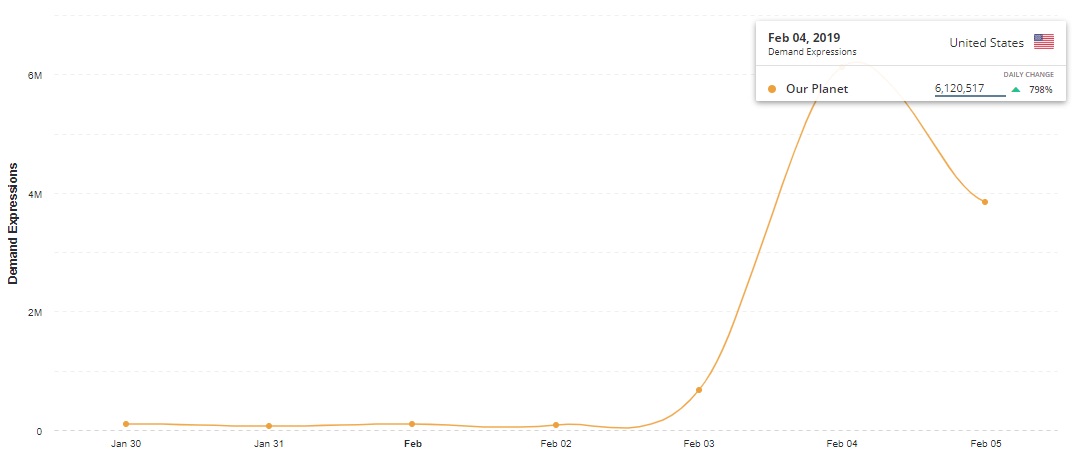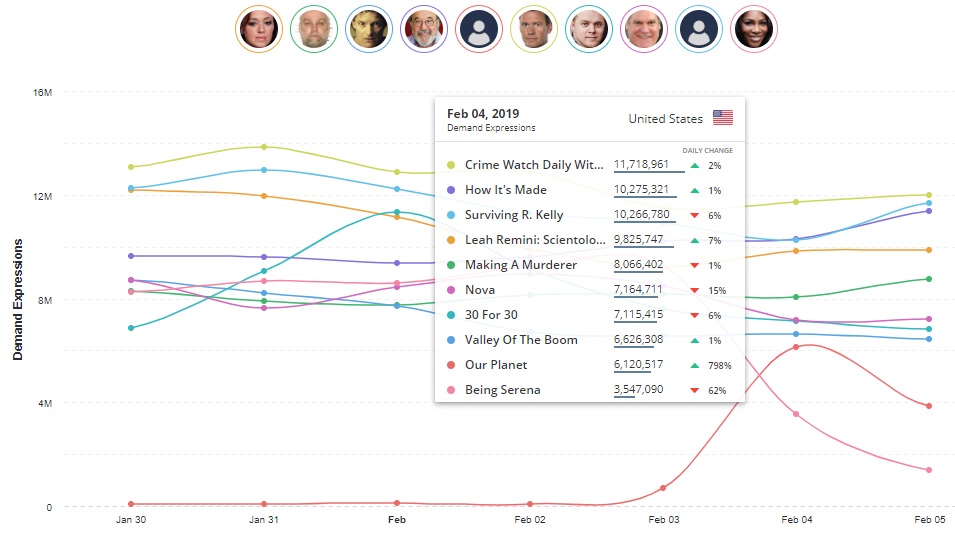Image: A Hardwicke’s Woolly Bat flies into a Nepenthes pitcher plant in the pristine primary rainforest of Mulu National Park in Borneo. This bat has developed a unique symbiotic relationship with the plant. The plant provides a ‘sleeping bag’ for the bat, which the bat locates using its echo-location, based on the plant’s provision of a unique ‘sonar dish’ that the bat alone can find. In return, the bat’s droppings fertilise the plant. Such extremely complex relationships between plants and animals are unique to Borneo’s rainforests, and take millions of years to develop. Many are now under threat. (Our Planet, Netflix – photo credit: Ben Macdonald/Silverback Films)
This year Netflix chose the Super Bowl to air its first trailer for Our Planet, a new natural-history series narrated by Sir David Attenborough.
Using the platform of the Super Bowl to promote a nature documentary
Deadline notes the immense effort that has gone in to produce this new 8 part series, from the same creator as the 2006 series Planet Earth: “Our Planet combines stunning photography and technology with a never-before-filmed look at Earth’s remaining wilderness areas and their animal inhabitants. The four-year project was filmed in 50 countries across all seven continents, with more than 600 crew members capturing 3,500-plus filming days.”
Netflix says on the trailer’s YouTube page that its new nature series “reminds us that we’re all on one team” and that it will be available globally on April 5. Here is the trailer that was shown live at the Super Bowl on February 3, 2019:
The “Super Bowl effect” on audience demand can be clearly demonstrated: By leveraging US TV demand data, captured in real-time from our global demand measurement system, we are able to show that Netflix realized an increase in audience demand of almost 800% overnight for this title, bringing the new series’ pre-release demand in the US to around 6.1 million daily average Demand Expressions (DEx) on February 4.
Whilst this new show’s demand pales in comparison to other documentaries with daily DEx averages upwards of 10 million, it does appear that the Super Bowl has had a significant audience impact on this title in the United States.
Of course, this is not a fair comparison given some of these shows have had years to build an audience, whilst others have only just been released. However, it does provide the necessary context to demonstrate what the demand footprint for a top performing documentary series looks like.
On the global stage we are seeing that thus far the most demand is originating from the United Kingdom on a 30 day average per capita basis. Interestingly, small markets such as Switzerland are making an appearance in the top 5 also, as well as one of Asia’s leading markets – Japan – in fourth position.
The stage is now set for Netflix to ramp up global marketing as SVOD service approaches the worldwide release date on April 5.
UPDATE: This article has been updated with the latest data, showing a significant increase in demand on February 4.




